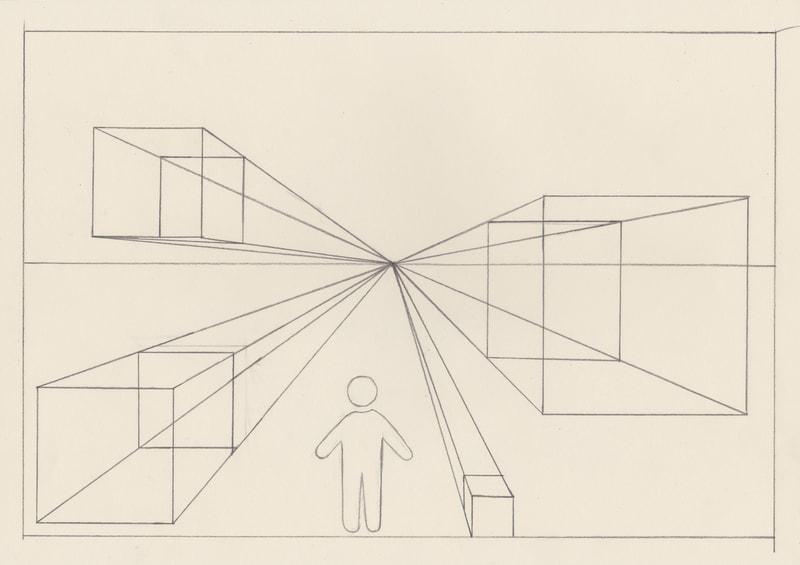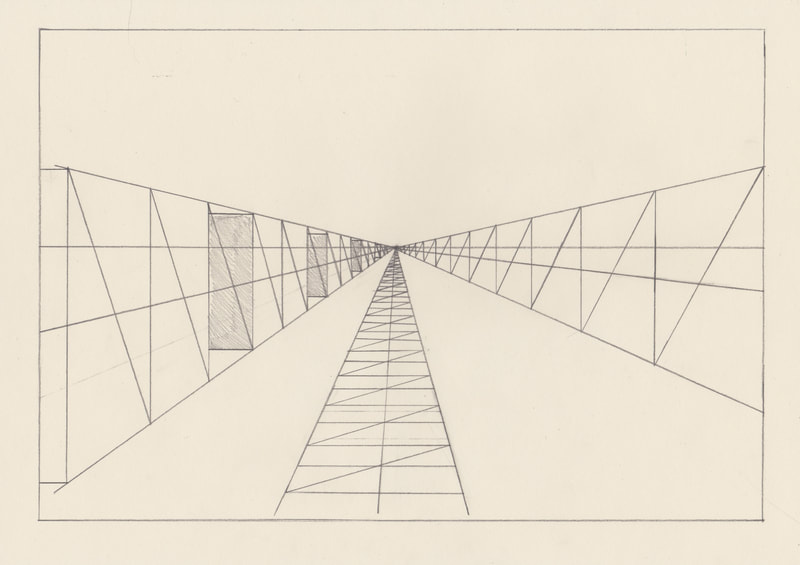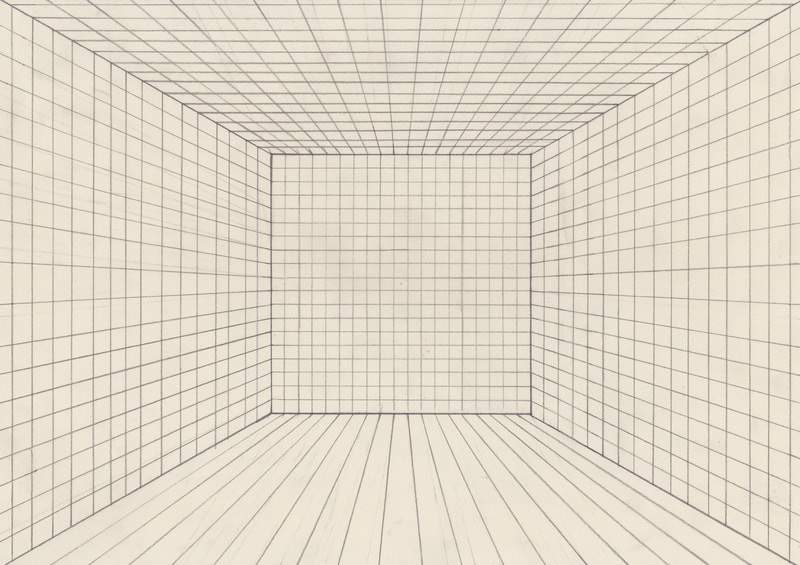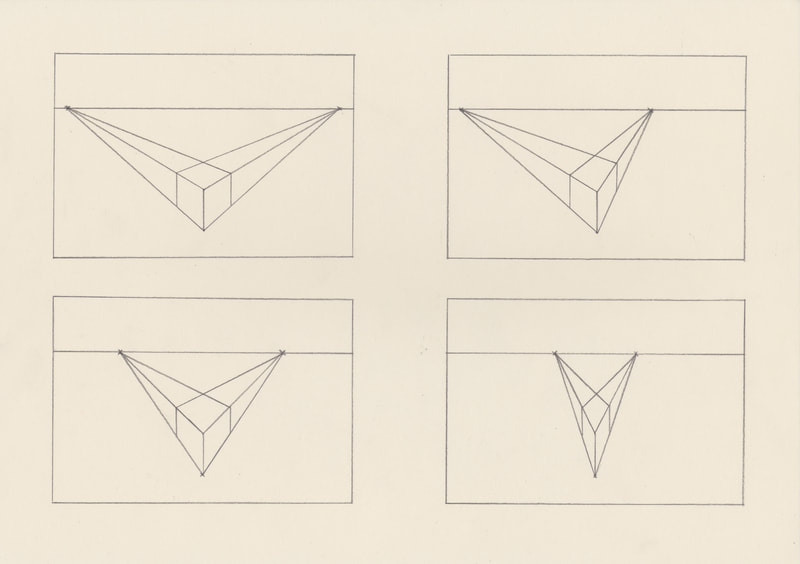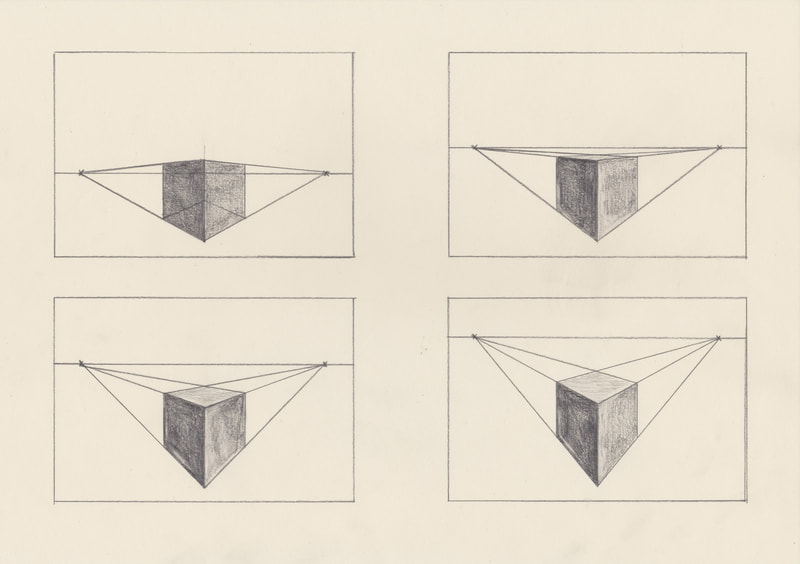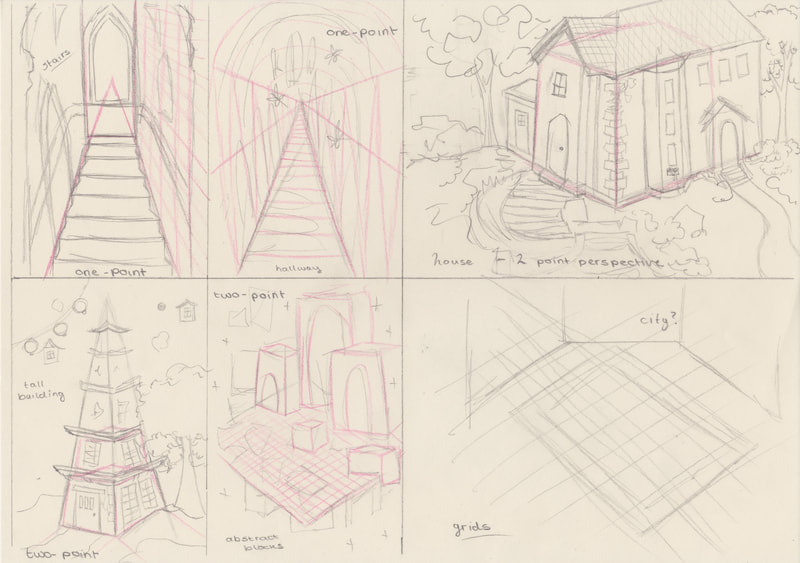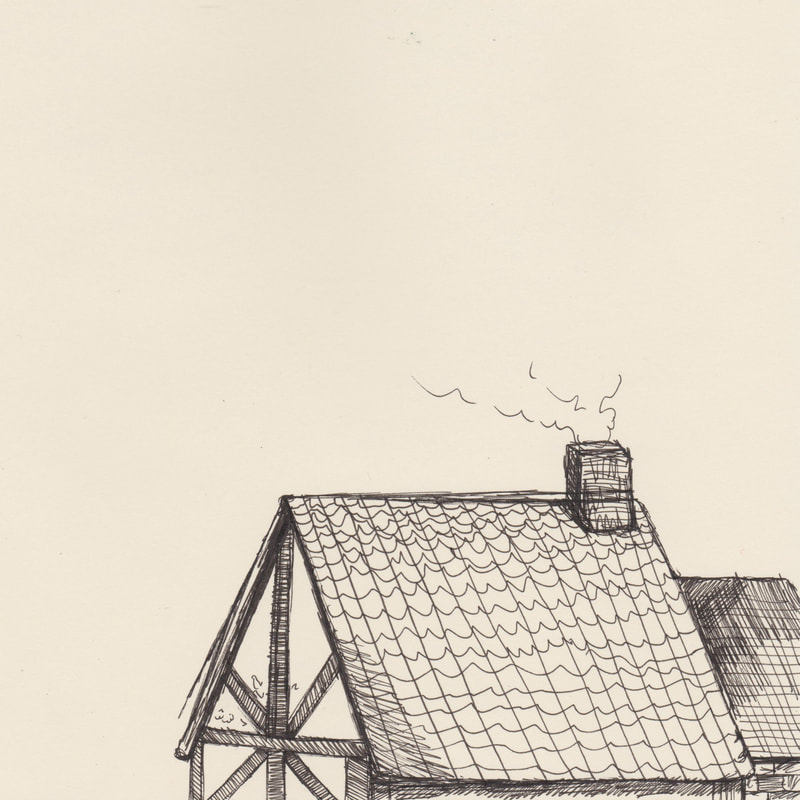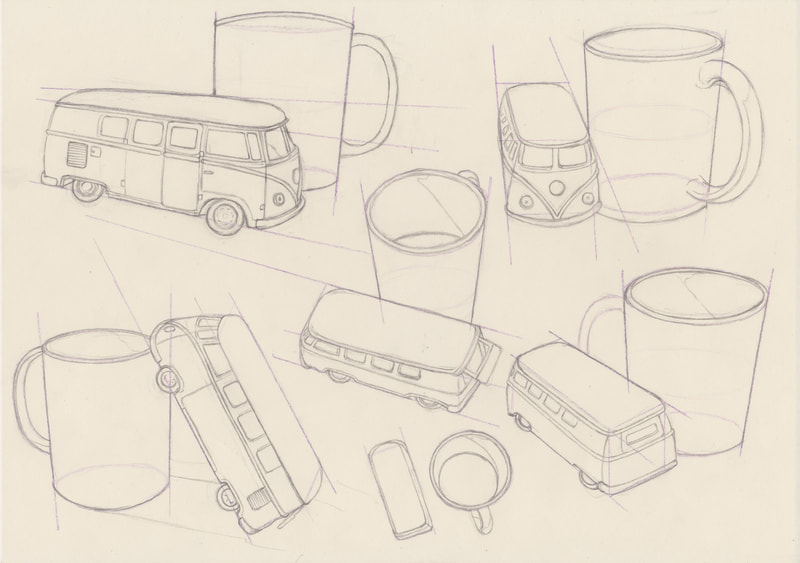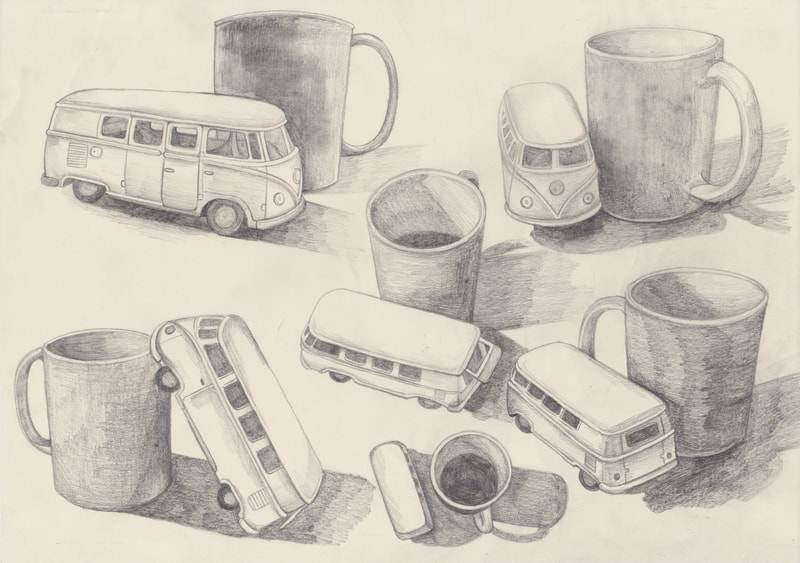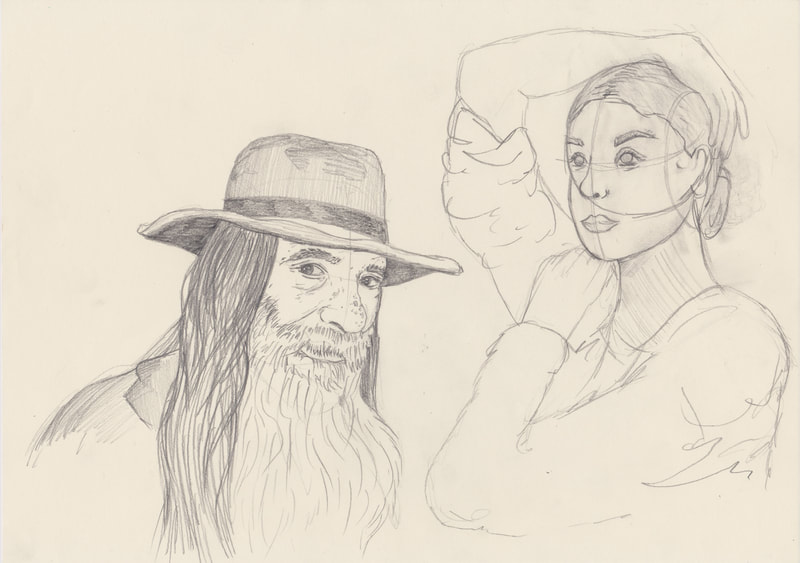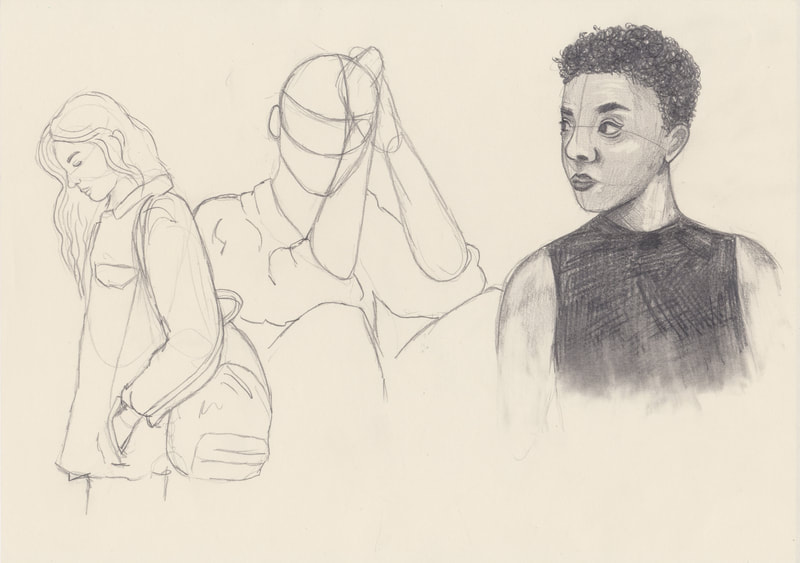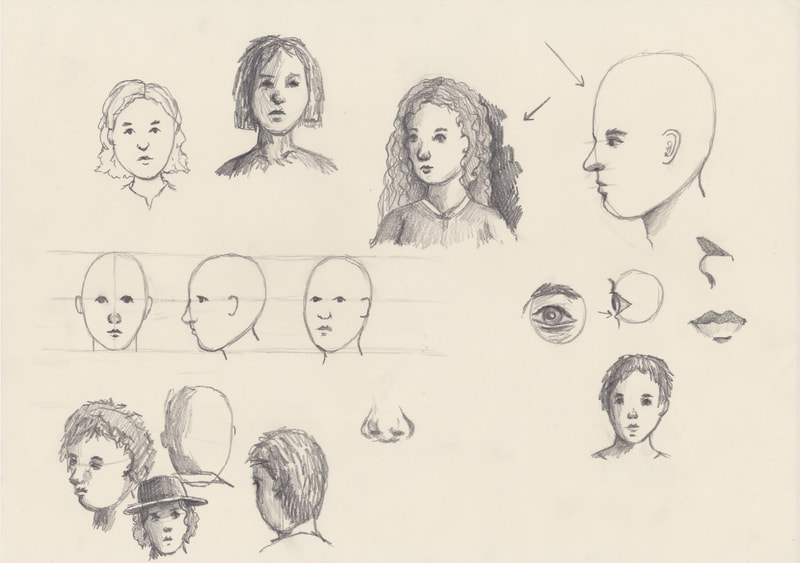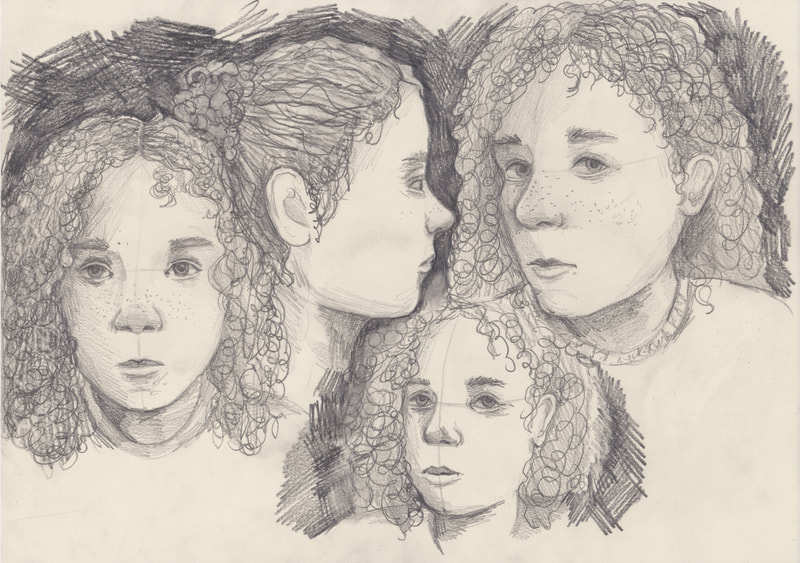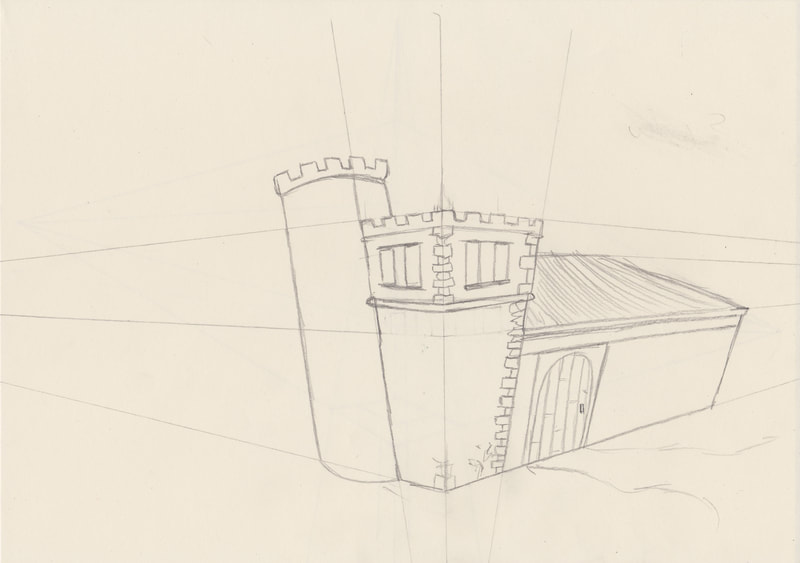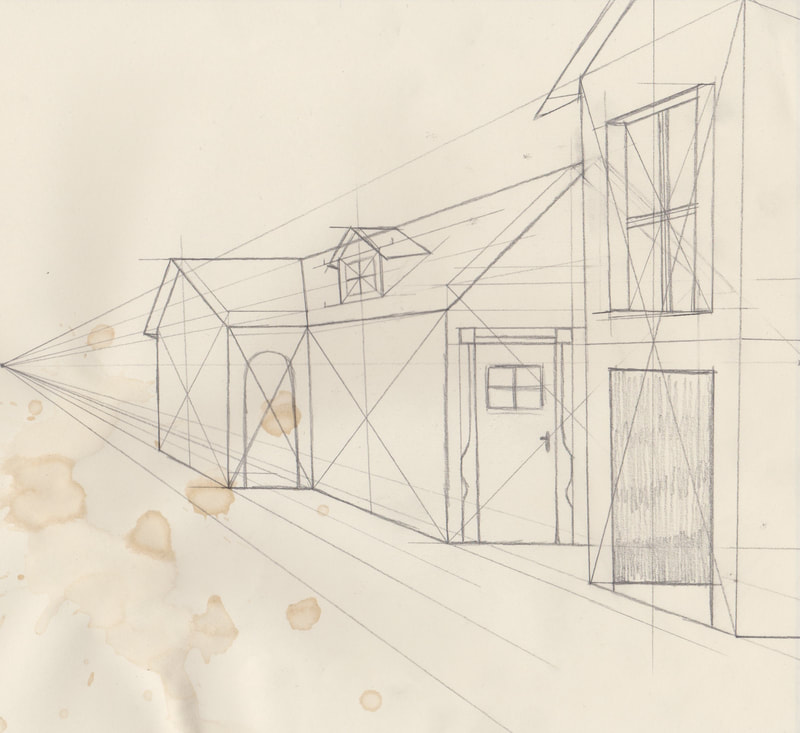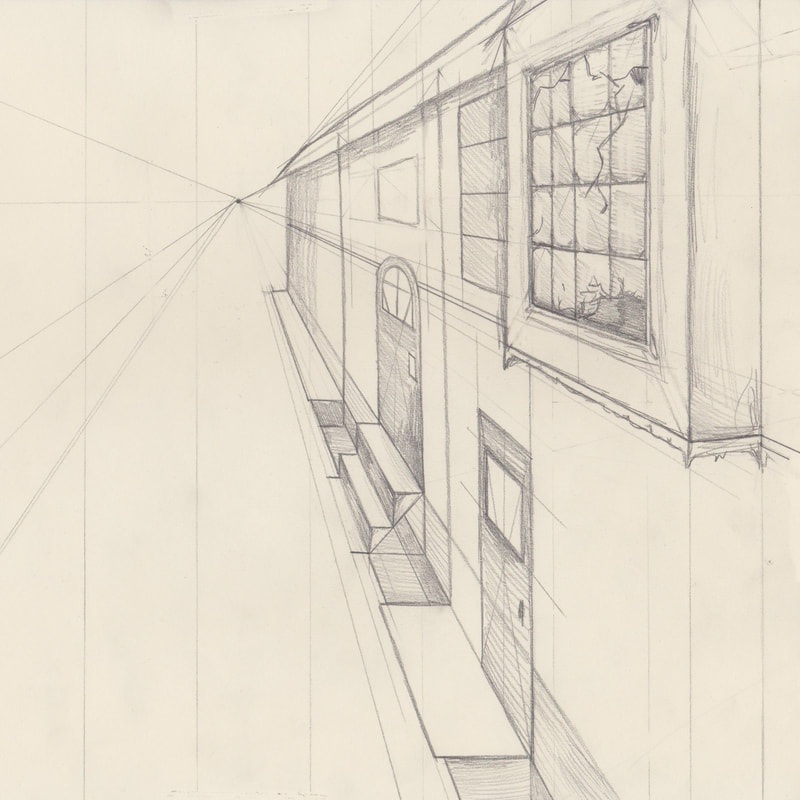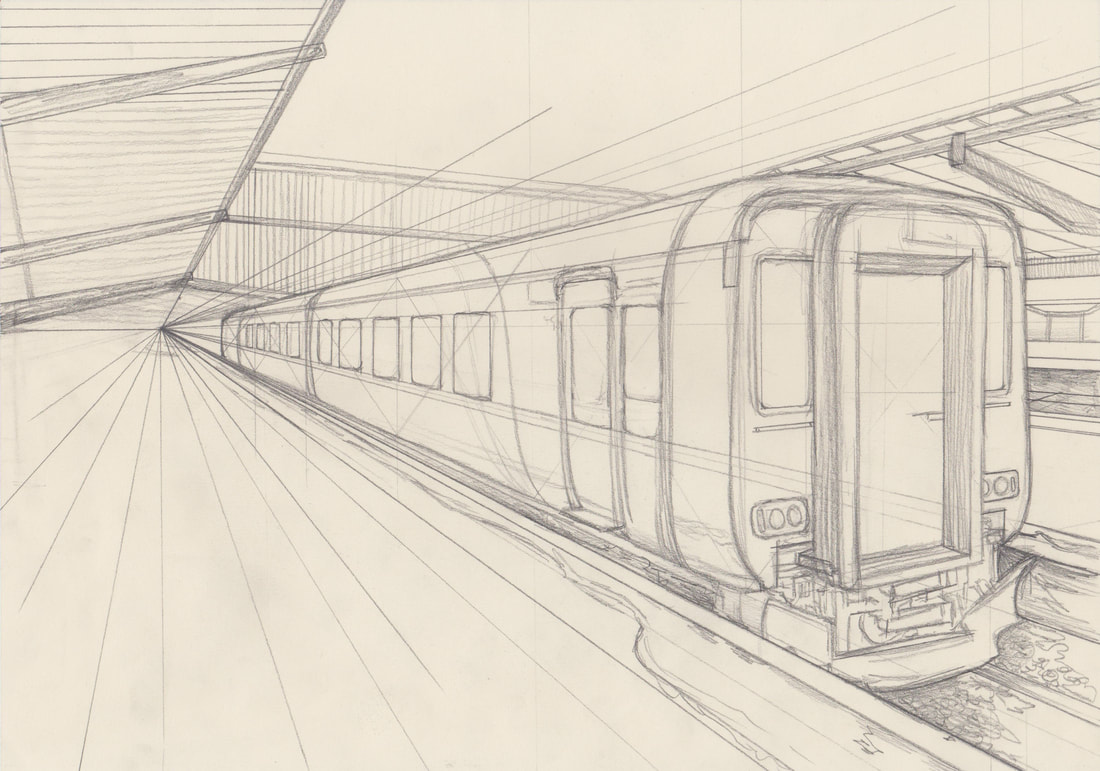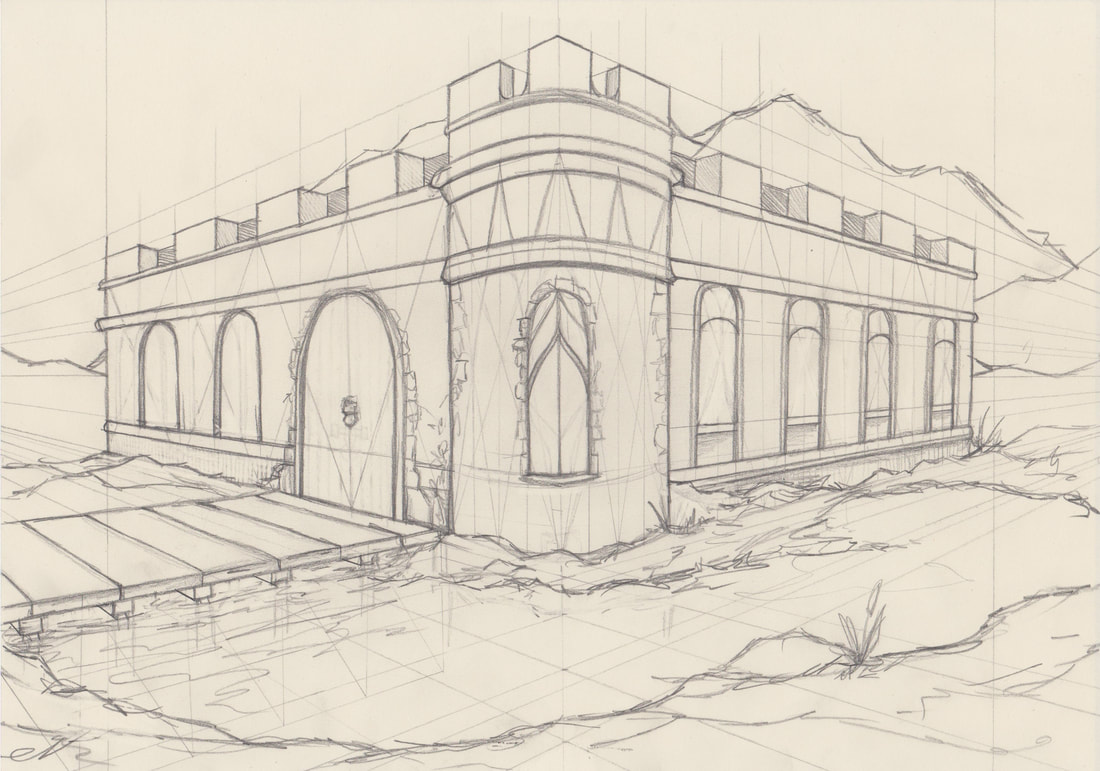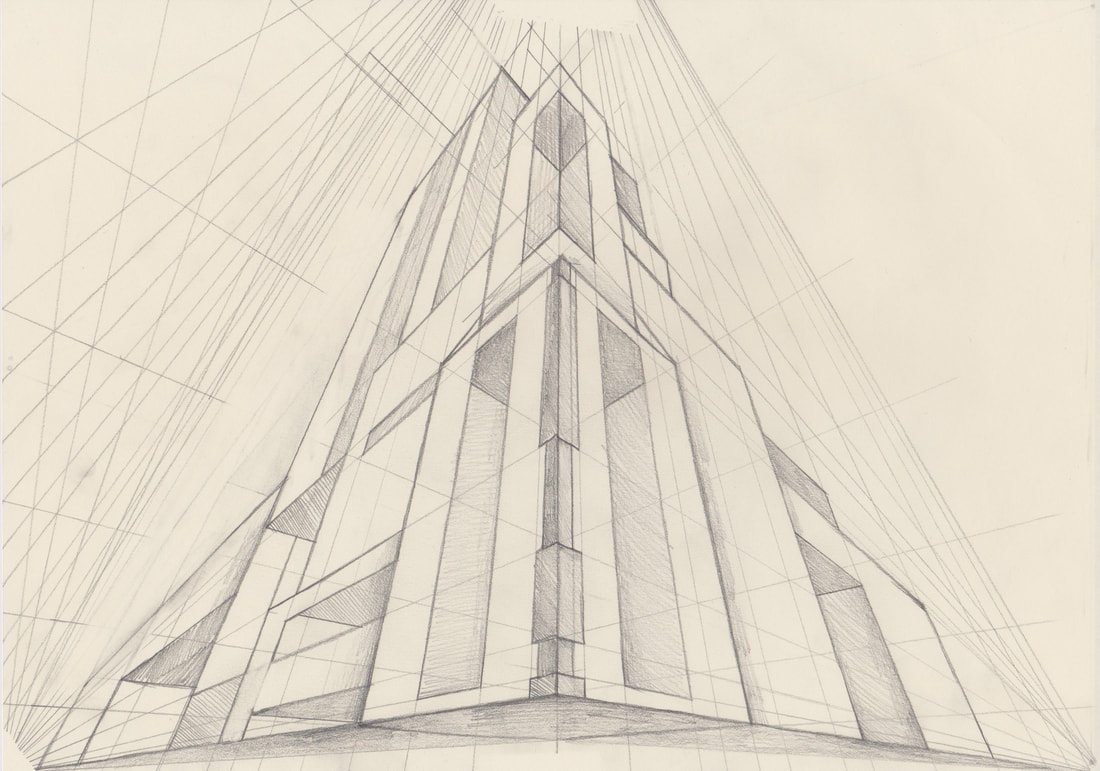- PERSPECTIVE -
Exercise 1:
Play with eye-level/horizon within the frame and move cubes and boxes around.
Freehand sketch a cube that is; below you, above you and bigger than you.
Play with eye-level/horizon within the frame and move cubes and boxes around.
Freehand sketch a cube that is; below you, above you and bigger than you.
Exercise 2:
Play with "fences"
How can they be used?
Play with "fences"
How can they be used?
Exercise 3:
Show off with grids/chess boards.
Show off with grids/chess boards.
Exercise 4:
Draw ellipses/cylinders at different positions within the picture plane
Use shadow and light
Draw ellipses/cylinders at different positions within the picture plane
Use shadow and light
This took my brain a bit of getting around, at first the cylinders looked all crooked. They look better now but I still find them quite confusing to draw.
Exercise 5:
Play with eye-level/horizon within the frame and move cubes and boxes around.
What happens when you move the vanishing points?
Use shadow and light. Freehand sketch a cube that is; below you, above you, bigger than you.
Play with eye-level/horizon within the frame and move cubes and boxes around.
What happens when you move the vanishing points?
Use shadow and light. Freehand sketch a cube that is; below you, above you, bigger than you.
At first I couldn't work out how to put multiple cubes on the same page at different heights, but after a lot of brain ache I think I managed to make it work.
This is the two perspective boxes, I changed it to have more realistic shading.
Exercise 6:
Understand then show-off using one and two point perspective.
Use a wide range of materials including paint/colour.
Experiment with strength/width of line.
Dispense with construction lines once you understand the theory and freehand sketch.
Understand then show-off using one and two point perspective.
Use a wide range of materials including paint/colour.
Experiment with strength/width of line.
Dispense with construction lines once you understand the theory and freehand sketch.
I think I need to work on perspective some more, so that I can understand it, I seem to be able to work with the basic concepts however, when it moves to real life buildings/places it becomes far more difficult, so I end up drawing what I think it should look like, not what I know it should be.
- UNDERSTANDING WHAT YOU SEE -
Exercise 1:
Take a cup/can/bottle and small rectangular object and make a simple arrangement.
Draw what you understand and see using the techniques shown.
Move around the arrangement and change your eye-level each.
Use tone to indicate light direction and shadow.
Take a cup/can/bottle and small rectangular object and make a simple arrangement.
Draw what you understand and see using the techniques shown.
Move around the arrangement and change your eye-level each.
Use tone to indicate light direction and shadow.
I tried to fight my brain but it won this battle, the perspective of some of these drawing are quite off, but at least I have learned from it.
Exercise 2:
Working in pairs take turns to pose for one another.
Use the measurement and 'seeing' techniques you've been shown, produce highly simplified (but accurate) full figure drawings of solid figures.
Produce head and shoulder drawings using the same knowledge and skills.
Move you viewpoint and pose each time.
Use light direction, shadow and tone.
Working in pairs take turns to pose for one another.
Use the measurement and 'seeing' techniques you've been shown, produce highly simplified (but accurate) full figure drawings of solid figures.
Produce head and shoulder drawings using the same knowledge and skills.
Move you viewpoint and pose each time.
Use light direction, shadow and tone.
Overall I have found perspective very difficult so far, but I am not deterred.
I already feel like I am understanding what I see more, so this is definitely something that I will continue to work on and improve.
I already feel like I am understanding what I see more, so this is definitely something that I will continue to work on and improve.
Attempt a three point perspective.
I got confused and created a two point first, but my three point perspective always looks a little weird.
I had plans to create full sized illustrations of the ideas below but unfortunately I ran out of time.
I got confused and created a two point first, but my three point perspective always looks a little weird.
I had plans to create full sized illustrations of the ideas below but unfortunately I ran out of time.
Please forgive the wobbly lines, I was creating this sketch with my dog on my knee in the dark, while waiting in my car.
Trying to Improve: Extra Holiday Work
These are some YouTube videos that I found so I could figure out how to draw buildings using perspective.
|
|
|
|
|
|
|
|
My Drawings


